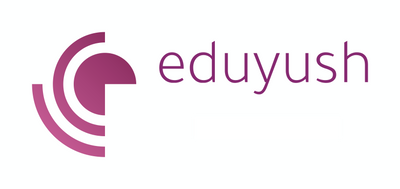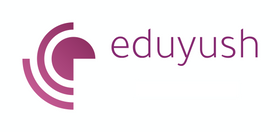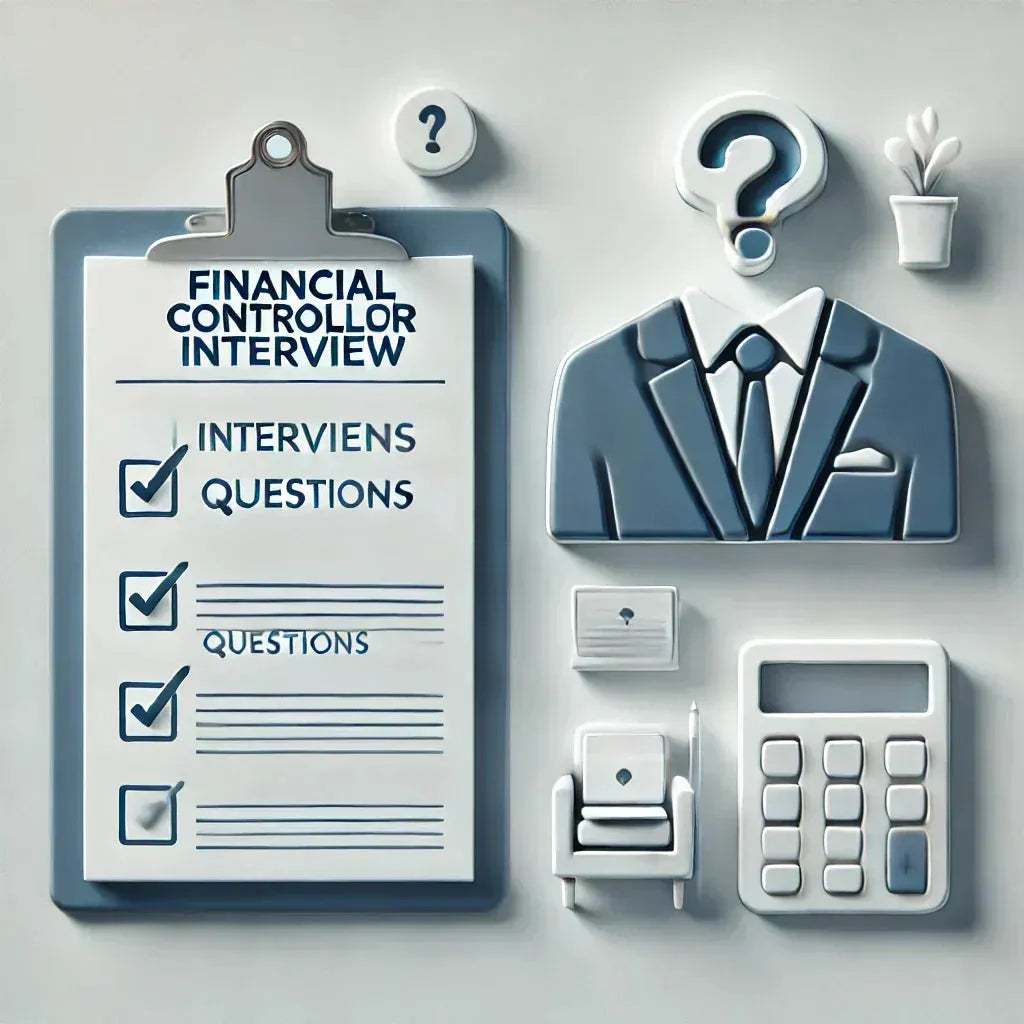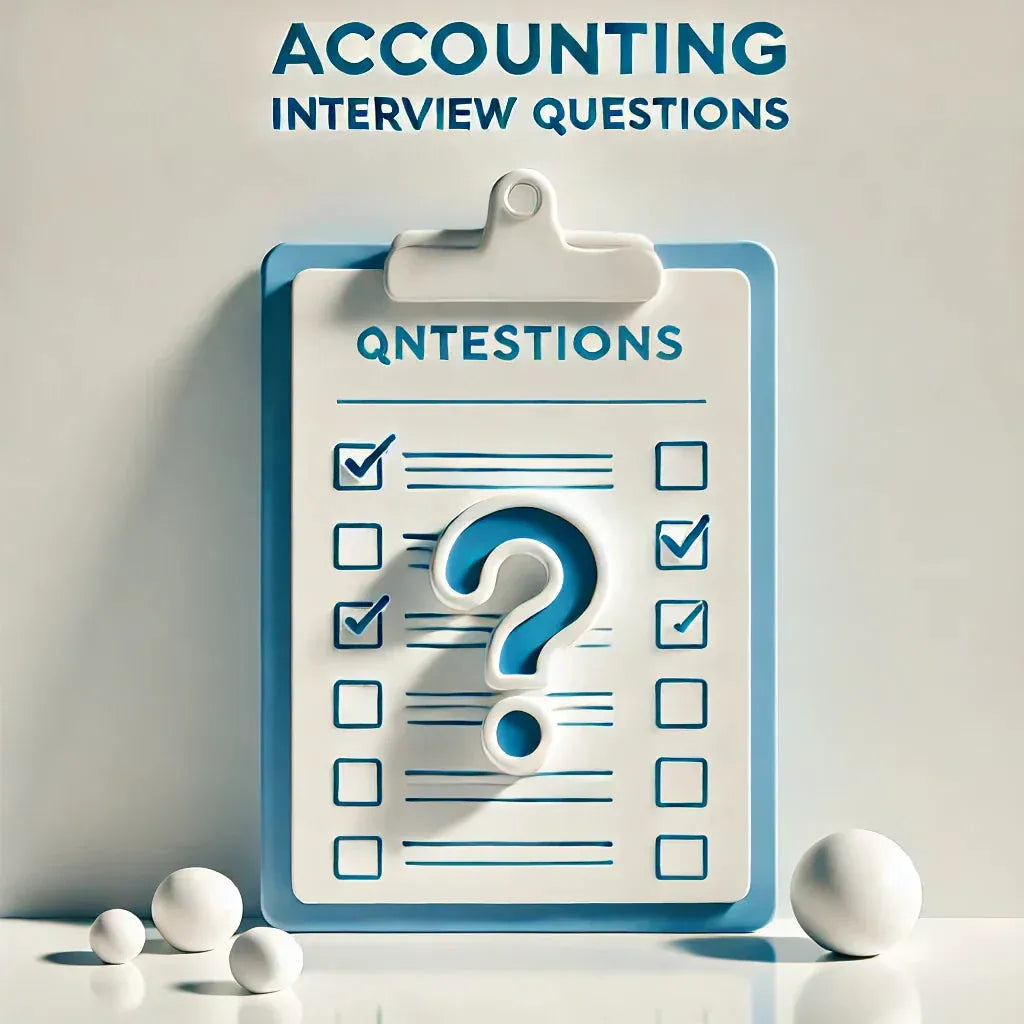Interview Questions for CA Articleship in Big 4
Interview Questions for CA Articleship in BIG 4
Interview questions for CA articleship in Big 4 firms often combine technical, behavioral, and situational queries. These questions help evaluate your practical knowledge, problem-solving abilities, and communication skills. Knowing what to expect can reduce anxiety and improve your performance.
In this blog, we’ll explore frequently asked questions for Big 4 interviews, provide sample answers, and offer preparation tips. From technical topics to HR discussions, this guide ensures you’re ready to shine.
Common Interview Questions for CA Articleship in Big 4
Big 4 firms follow a structured interview process, often including technical rounds and HR discussions. Below are some of the most common categories of questions.
Technical interview questions for ca articleship in big 4
These questions test your grasp of core accounting and auditing concepts.
Technical Interview Questions with Model Answers
-
What is the difference between cash flow and fund flow?
Answer:
Cash flow shows the movement of cash within an organization during a specific period. It focuses on liquidity. Fund flow, on the other hand, analyzes changes in financial position, highlighting the movement between long-term funds and assets. -
What are the objectives of an audit?
Answer:
The primary objectives are to verify financial statements' accuracy, detect fraud and errors, assess internal controls, and ensure compliance with regulations and accounting standards. -
Explain the treatment of bad debts under the provisions of the Companies Act, 2013.
Answer:
Bad debts are written off as expenses in the profit and loss account. They reduce the accounts receivable balance. Under Schedule III of the Companies Act, they must be disclosed under trade receivables after adjusting for provisions. -
How is goodwill calculated, and what methods are used?
Answer:
Goodwill is the value of a business's reputation. Common methods include the Average Profit Method, Super Profit Method, and Capitalization Method. -
What is the difference between contingent liabilities and provisions?
Answer:
Provisions are recognized for present obligations with a reliable estimate, while contingent liabilities are potential obligations dependent on uncertain events. -
What is depreciation, and how is it accounted for in financial statements?
Answer:
Depreciation is the systematic allocation of an asset's cost over its useful life. It is recorded as an expense in the profit and loss account and reduces the asset's carrying amount on the balance sheet. -
What is a Deferred Tax Asset (DTA), and when is it recognized?
Answer:
DTA arises when taxable income is higher than accounting income, leading to future tax savings. It is recognized when there is reasonable certainty of future taxable profits. -
What is the difference between AS 22 and Ind AS 12 for income taxes?
Answer:
AS 22 uses the timing difference approach, while Ind AS 12 follows the temporary difference method for recognizing deferred tax assets and liabilities. -
Explain the key components of an audit report.
Answer:
*The key components are:- Auditor’s opinion (qualified, unqualified, adverse, or disclaimer).
- Basis for opinion.
- Key audit matters.
- Responsibilities of management and auditors.*
-
What is materiality in auditing, and how is it determined?
Answer:
Materiality is the threshold above which misstatements affect financial decisions. It is determined based on benchmarks like revenue, profit, or total assets, and the nature of transactions.
Explore 50+ Chartered accountant interview questions with model answers
Situational-Based Interview Questions with Model Answers
-
You find discrepancies in a client’s financial records during an audit. What would you do?
Answer:
I would document the discrepancies, investigate their cause, and discuss them with the client to resolve them. If unresolved, I would escalate them to my manager and ensure they are disclosed in the audit report. -
How would you handle a scenario where a client refuses to share critical documents?
Answer:
I would communicate the importance of the documents for compliance and accurate reporting. If the issue persists, I would escalate the matter to the engagement partner and document the communication trail. -
What would you do if you missed a crucial deadline?
Answer:
I would immediately inform my manager, explain the reasons, and present a plan to minimize the impact. I would also take steps to ensure it doesn’t happen again. -
Your manager assigns you a task you’ve never done before. How would you approach it?
Answer:
I would research the task, refer to company guidelines, and seek guidance from colleagues or seniors. I’d ensure the work is completed accurately and on time. -
A team member isn’t contributing effectively to a project. How would you handle it?
Answer:
I would have a one-on-one conversation to understand their challenges, offer support, and redistribute tasks if necessary. If the problem persists, I would escalate it to my supervisor. -
How would you handle a situation where your senior disagrees with your audit findings?
Answer:
I would present my findings with supporting evidence and discuss the rationale behind them. I’d remain open to their feedback and resolve the disagreement collaboratively. -
What steps would you take if you suspect fraudulent activity during an audit?
Answer:
I would gather evidence, document my findings, and report the matter confidentially to the engagement partner or fraud investigation team. I’d ensure all actions align with professional ethics. -
You realize you’ve made an error in an audit report after submitting it. What do you do?
Answer:
I would immediately inform my manager about the mistake, propose corrections, and work quickly to issue a revised report. -
A client pressures you to overlook minor non-compliance issues. How would you respond?
Answer:
I would politely explain the importance of compliance and the risks of overlooking issues. If the pressure persists, I would escalate the matter internally. -
You’re assigned multiple urgent tasks with overlapping deadlines. How would you prioritize?
Answer:
I would assess the importance and impact of each task, discuss priorities with my manager, and focus on completing the most critical tasks first while delegating where possible.
Behavioral Interview Questions for CA Articleship in Big 4
Behavioral questions help interviewers assess your soft skills, decision-making abilities, and how you handle real-life challenges. These questions often start with phrases like "Tell me about a time when…" or "How would you handle…". Below are 10 common behavioral questions with model answers to guide your preparation.
1. Tell me about a time when you worked as part of a team. What was your role, and what was the outcome?
Model Answer:
During my internship, I was part of a team preparing GST filings for multiple clients. My role was to collect and organize client data and validate invoices. I collaborated with my team to ensure deadlines were met, and we achieved 100% accuracy in submissions, earning client appreciation for our efficiency.
2. How do you handle constructive criticism from a senior?
Model Answer:
I view constructive criticism as an opportunity to improve. During a project, my senior pointed out errors in my Excel formulas. I quickly corrected them and took a short online course to improve my skills. This not only resolved the issue but also enhanced my confidence in Excel.
3. Describe a time when you faced a challenging deadline. How did you manage it?
Model Answer:
During my internship, I was tasked with preparing financial statements while assisting with GST filings, both with tight deadlines. I prioritized my tasks, allocated specific time slots for each, and communicated progress with my senior. By staying organized, I completed both tasks on time without compromising accuracy.
4. Can you give an example of a time when you had to resolve a conflict within a team?
Model Answer:
In a college project, two team members disagreed on the approach to solve a case study. I mediated by listening to both perspectives, combining their ideas into a solution that satisfied both. This approach resolved the conflict and improved teamwork.
5. How do you handle multiple tasks with competing priorities?
Model Answer:
When managing multiple tasks, I prioritize based on deadlines and complexity. During my internship, I handled GST filings, client communication, and reconciliation simultaneously. I created a task list, addressed the most time-sensitive tasks first, and delegated simpler tasks to team members when possible.
6. Share a time when you had to learn a new skill quickly to complete a task.
Model Answer:
While assisting with an audit, I was asked to use accounting software I wasn’t familiar with. I took the initiative to watch tutorials and practice during breaks. By the next day, I was confident in using the software, and the audit progressed without delays.
7. Tell me about a time you made a mistake at work or during a project. How did you handle it?
Model Answer:
While drafting financial statements, I overlooked a small entry that caused a discrepancy. Upon noticing the error, I immediately informed my senior, corrected the mistake, and implemented a checklist system to avoid similar issues in the future.
8. Describe a situation where you had to adapt to a sudden change. How did you manage?
Model Answer:
During a client meeting, our manager asked me to present part of the audit findings unexpectedly. I quickly reviewed my notes, organized my thoughts, and delivered the presentation. The client appreciated the clarity and detail, and the meeting was successful.
9. Can you give an example of when you went above and beyond to help a client or team?
Model Answer:
During my internship, I noticed discrepancies in a client’s GST input claims that weren’t part of my assigned task. I flagged the issue, discussed it with my senior, and helped the client rectify the errors, saving them from potential penalties.
10. How do you ensure clear communication when working with clients or team members?
Model Answer:
I believe in active listening and clear articulation. During my internship, I created summary emails after client meetings to ensure everyone was aligned on deliverables. This habit minimized miscommunication and improved task efficiency.
Key Tips for Answering Behavioral Questions:
- Use the STAR Method: Structure your answers with Situation, Task, Action, and Result to provide a clear and concise response.
- Be Honest: Share real experiences and focus on what you learned or achieved.
- Emphasize Skills: Highlight soft skills like teamwork, adaptability, time management, and problem-solving.
- Stay Positive: Even when discussing challenges, focus on the resolution and outcomes.
Resume and Cover Letter Tips for Big 4 Firms
How to Create a Standout CA Articleship Resume
Your resume should showcase your technical and soft skills, education, and relevant experiences.
Key Points to Highlight:
- Education: Mention your CA Foundation and Intermediate scores.
- Technical Skills: Proficiency in Tally, SAP, and MS Excel, as well as familiarity with GST and tax filing.
- Internships: Detail your responsibilities and achievements in any finance or accounting internship.
- Certifications: Include courses like Advanced Excel, GST certification, or financial modeling.
- Extra-Curriculars: Mention leadership roles, volunteering, or participation in CA events.
Crafting the Perfect Cover Letter for CA Articleship Applications
Structure:
- Opening: State your intent and why you are applying to the firm.
- Example: “I am excited to apply for an articleship position at [Firm Name]. Your reputation for excellence inspires me to contribute and grow within your organization.”
- Highlight Strengths: Showcase relevant skills and achievements.
- Example: “During my internship, I assisted in preparing financial statements and filing GST returns, strengthening my practical understanding of taxation and auditing.”
- Express Enthusiasm: Share what excites you about the firm.
- Example: “I admire your firm’s commitment to innovation and professional development, and I look forward to learning from your esteemed team.”
- Closing: Reaffirm your interest and availability for an interview.
How to Approach Technical and HR Rounds in Big 4
Technical Rounds:
- Revise key topics from accounting standards, taxation, and auditing.
- Practice solving case studies and numerical problems.
- Stay updated on recent financial reforms and budget amendments.
HR Rounds:
- Prepare concise and honest answers about your career goals and strengths.
- Show confidence, enthusiasm, and a genuine interest in the firm.
- Practice answering common behavioral questions to ensure you stay composed.
Final Thoughts
A CA articleship interview with a Big four firm is an opportunity to showcase your technical expertise and interpersonal skills. With the proper preparation and mindset, you can confidently tackle any question. Combining technical knowledge, thoughtful behavioral answers, and situational analysis’ll leave a lasting impression on your interviewers.
Interview Questions? Answers.
Interview questions and model answers
- Accounting Interview questions and answers
- Accounts receivable interview questions
- Accounts payable interview questions
- ESG Interview questions
- Forensic accountant interview questions
- Financial controller interview questions
- GST interview questions
- IFRS interview questions and answers
- IFRS 15 interview questions and answers
- IFRS 17 Interview Questions and answers
- IFRS 9 Interview Questions and Answers
- IFRS 16 Interview Questions and answers
- Managerial round interview questions and answers
- Blockchain interview questions for finance professionals
What should I wear to an interview?
It's important to dress professionally for an interview. This usually means wearing a suit or dress pants and a button-down shirt for men, and a suit or a dress for women. Avoid wearing too much perfume or cologne, and make sure your clothes are clean and well-maintained.
How early should I arrive for the interview?
It's best to arrive at least 15 minutes early for the interview. This allows you time to gather your thoughts and compose yourself before the interview begins. Arriving too early can also be disruptive, so it's best to arrive at the designated time or a few minutes early.
"What should I bring to an interview?"
It's a good idea to bring a few key items to an interview to help you prepare and make a good impression. These might include:
- A copy of your resume and any other relevant documents, such as references or writing samples.
- A portfolio or sample of your work, if applicable.
- A list of questions to ask the interviewer.
- A notebook and pen to take notes.
- Directions to the interview location and contact information for the interviewer, in case you get lost or there is a delay.
Is it okay to bring a friend or family member to the interview?
t's generally not appropriate to bring a friend or family member to an interview, unless they have been specifically invited or are necessary for accommodation purposes.
What should I do if I'm running late for an interview?"
If you are running late for an interview, it's important to let the interviewer know as soon as possible. You can try calling or emailing to let them know that you are running behind and to give an estimated arrival time.
If possible, try to give them a good reason for the delay, such as unexpected traffic or a last-minute change in your schedule. It's also a good idea to apologize for the inconvenience and to thank them for their understanding.
How should I address the interviewer?
- It's generally a good idea to address the interviewer by their professional title and last name, unless they specify otherwise. For example, you could say "Mr./Ms. Smith" or "Dr. Jones."
Is it okay to ask about the company's culture or benefits during the interview?
Yes, it's perfectly acceptable to ask about the company's culture and benefits during the interview. In fact, it's often a good idea to ask about these things to get a better sense of whether the company is a good fit for you. Just make sure to keep the focus on the interview and not get too far off track.
"What should I do if I don't know the answer to a question?"
It's okay to admit that you don't know the answer to a question. You can try to respond by saying something like: "I'm not sure about that specific answer, but I am familiar with the general topic and would be happy to do some research and get back to you with more information."
Alternatively, you can try to answer the question by using your own experiences or knowledge to provide context or a related example.
"Is it okay to ask about salary and benefits in an interview?"
It's generally best to wait until you have received a job offer before discussing salary and benefits.
If the interviewer brings up the topic, you can respond by saying something like: "I'm open to discussing salary and benefits once we have established that we are a good fit for each other. Can you tell me more about the overall compensation package for this position?"
"What should I do if I'm asked a illegal question?"
It's important to remember that employers are not allowed to ask questions that discriminate on the basis of race, religion, national origin, age, disability, sexual orientation, or other protected characteristics. If you are asked an illegal question, you can try to redirect the conversation back to your qualifications and skills for the job.
For example, you might say something like: "I'm not comfortable answering that question, but I am excited to talk more about my skills and experiences that make me a strong fit for this position."
"What should I do if I'm asked a question that I don't understand?"
It's okay to admit that you don't understand a question and to ask for clarification. You can try saying something like: "I'm sorry, I'm not sure I fully understand the question. Could you please clarify or provide some more context?"
How should I end the interview?
At the end of the interview, thank the interviewer for their time and express your interest in the position. You can also ask about the next steps in the hiring process and when you can expect to hear back. Finally, shake the interviewer's hand and make sure to follow up with a thank-you note or email after the interview.
Popular interview questions
- Mutual fund interview questions
- Best buy interview questions
- Aged care interview questions
- Interview outfits for women
- Business analyst interview questions
- Thank you email after interview
- questions to ask at end of interview
- Concentric advisors interview questions
- CA articleship interview questions
- Exit interview questions
- AML KYC interview questions
- Accounts payable interview questions
- Accounts receivable
- GST questions
- ESG questions
- IFRS interview
- Financial controller
- Mern stack
- Tally interview
- Terraform interview
- questions asked at interview for teaching assistant













Leave a comment